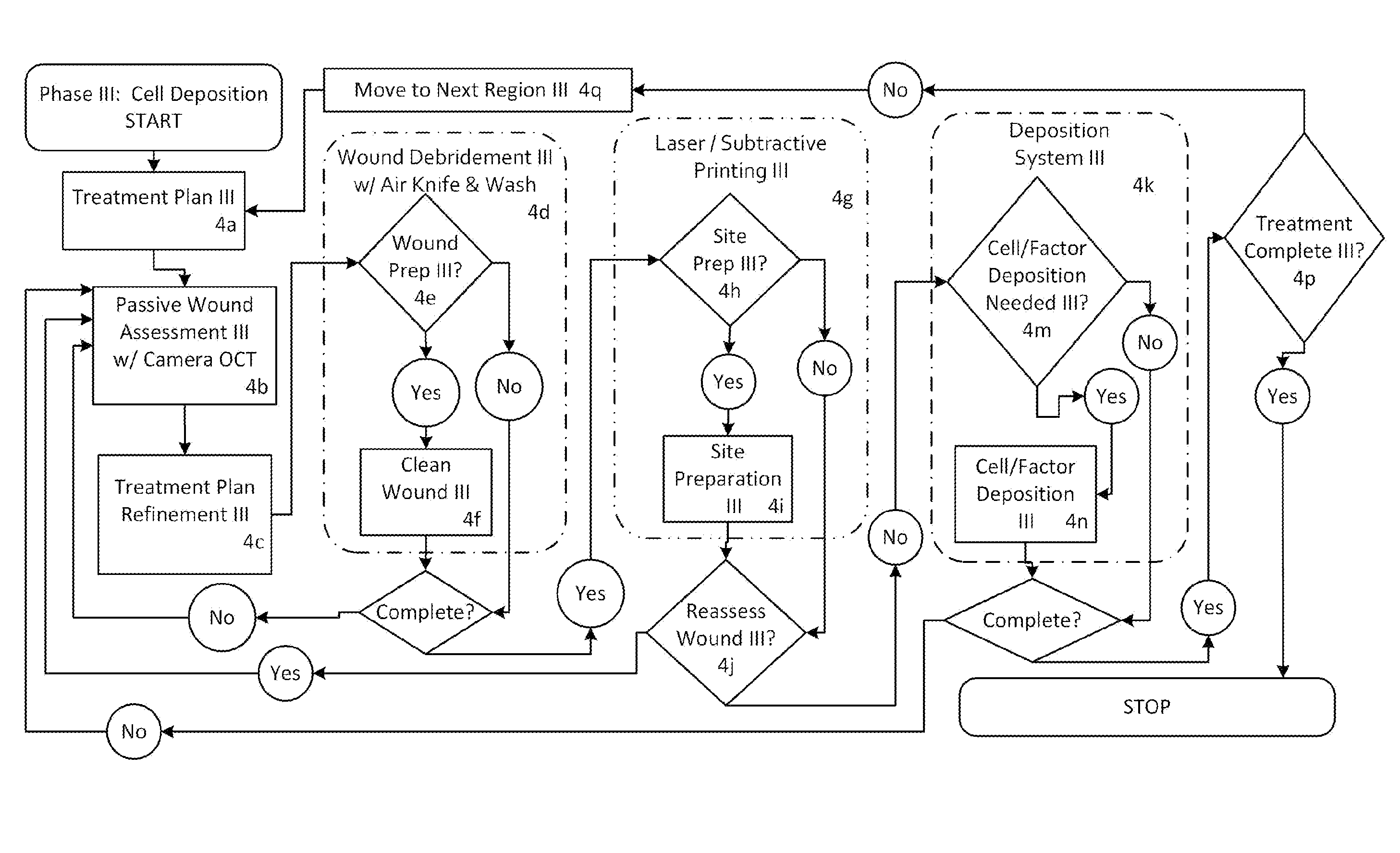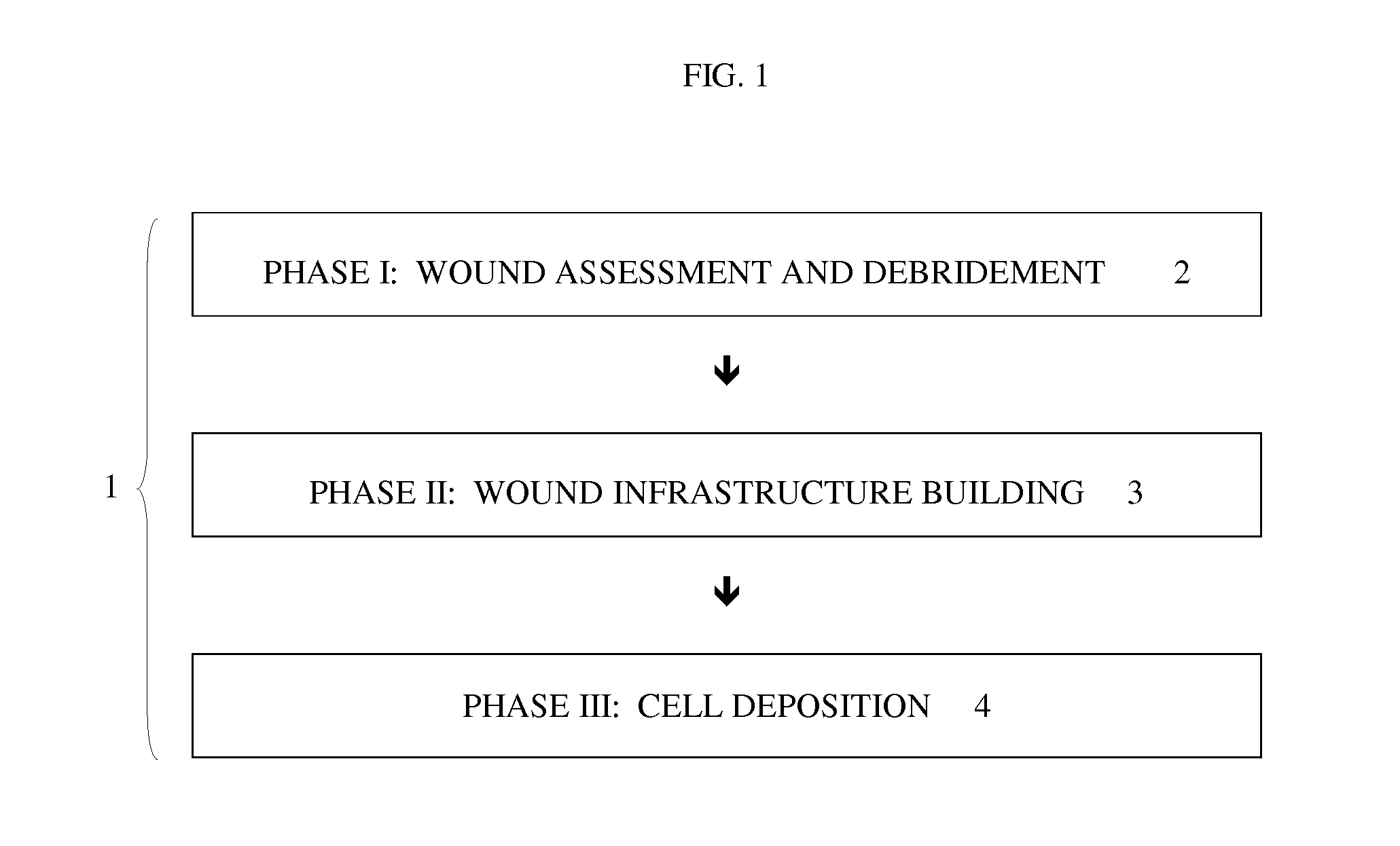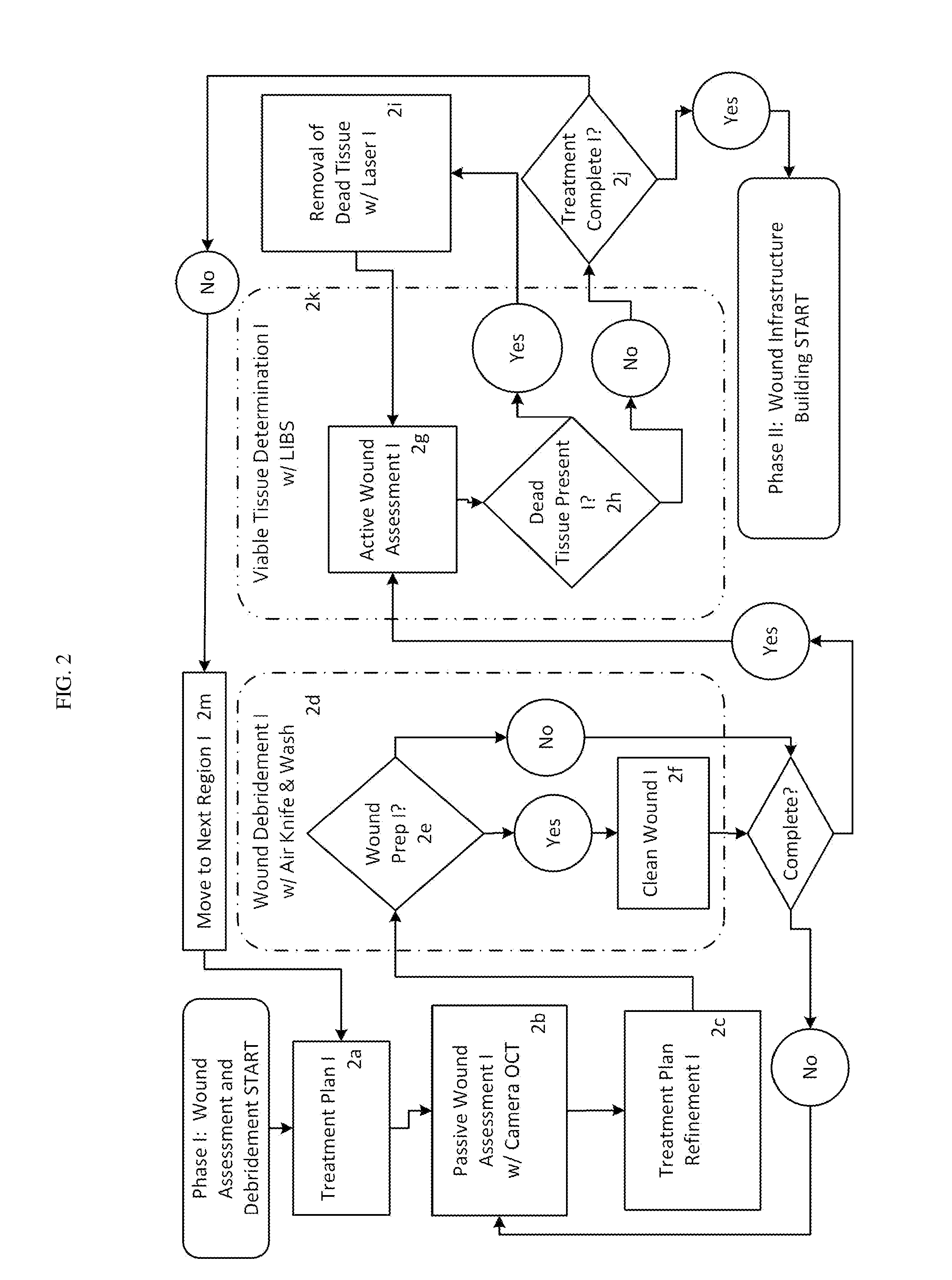Multi-component method for regenerative repair of wounds implementing photonic wound debridement and stem cell deposition
a multi-component, wound technology, applied in the field of medical devices, can solve the problems of inability to distinguish damaged tissue from immediately adjacent healthy tissue with particulary, deficiency of existing and prior art, and failure of macro approach to wound treatment, and achieve the effect of speeding up healing
- Summary
- Abstract
- Description
- Claims
- Application Information
AI Technical Summary
Benefits of technology
Problems solved by technology
Method used
Image
Examples
Embodiment Construction
[0053]As described above, the present invention provides a new and useful multi-component system for regenerative repair of wounds which implements photonic wound debridement and stem cell deposition, allows structured regenerative repair of the wound, utilizes robotic systems to inspect the wound, define and debride the wound, prints an extracellular matrix on the prepared wound site, and speeds healing by implementing developing stem cell technologies. This device is believed to be useful in hospitals and clinics, wherein patients with wounds related to skin trauma such as burns, infection, or melanoma are present. An example of an theatre of use is a children's burn ward. This device is also believed to be useful in military hospitals which receive soldiers injured in combat. The following description and accompanying drawings disclose at least one version of such a device.
[0054]Referring now to the invention in more detail in FIG. 1 there is multi-component method for regenerati...
PUM
 Login to View More
Login to View More Abstract
Description
Claims
Application Information
 Login to View More
Login to View More - R&D
- Intellectual Property
- Life Sciences
- Materials
- Tech Scout
- Unparalleled Data Quality
- Higher Quality Content
- 60% Fewer Hallucinations
Browse by: Latest US Patents, China's latest patents, Technical Efficacy Thesaurus, Application Domain, Technology Topic, Popular Technical Reports.
© 2025 PatSnap. All rights reserved.Legal|Privacy policy|Modern Slavery Act Transparency Statement|Sitemap|About US| Contact US: help@patsnap.com



